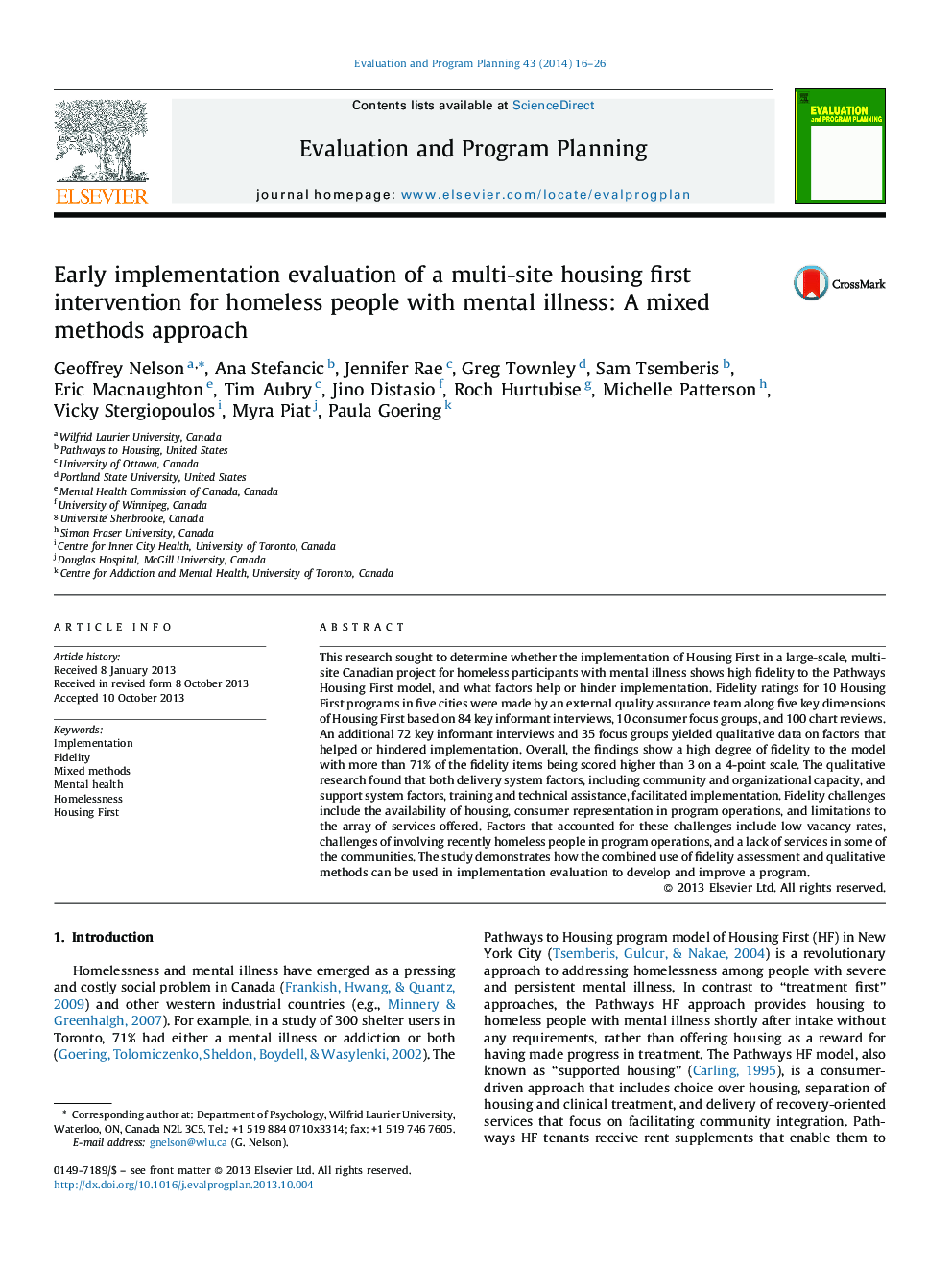| Article ID | Journal | Published Year | Pages | File Type |
|---|---|---|---|---|
| 322486 | Evaluation and Program Planning | 2014 | 11 Pages |
•We evaluated implementation and fidelity of Housing First in five-site research demonstration project.•A fidelity measure was developed and used to determine adherence to the Housing First model.•Qualitative methods were used to examine factors that helped or hindered the implementation of Housing First.•Overall, a high level of fidelity to the Housing First model was achieved.•Particular challenges to fidelity (e.g., housing availability) and reasons for them (e.g., low vacancy rates) were identified.
This research sought to determine whether the implementation of Housing First in a large-scale, multi-site Canadian project for homeless participants with mental illness shows high fidelity to the Pathways Housing First model, and what factors help or hinder implementation. Fidelity ratings for 10 Housing First programs in five cities were made by an external quality assurance team along five key dimensions of Housing First based on 84 key informant interviews, 10 consumer focus groups, and 100 chart reviews. An additional 72 key informant interviews and 35 focus groups yielded qualitative data on factors that helped or hindered implementation. Overall, the findings show a high degree of fidelity to the model with more than 71% of the fidelity items being scored higher than 3 on a 4-point scale. The qualitative research found that both delivery system factors, including community and organizational capacity, and support system factors, training and technical assistance, facilitated implementation. Fidelity challenges include the availability of housing, consumer representation in program operations, and limitations to the array of services offered. Factors that accounted for these challenges include low vacancy rates, challenges of involving recently homeless people in program operations, and a lack of services in some of the communities. The study demonstrates how the combined use of fidelity assessment and qualitative methods can be used in implementation evaluation to develop and improve a program.
